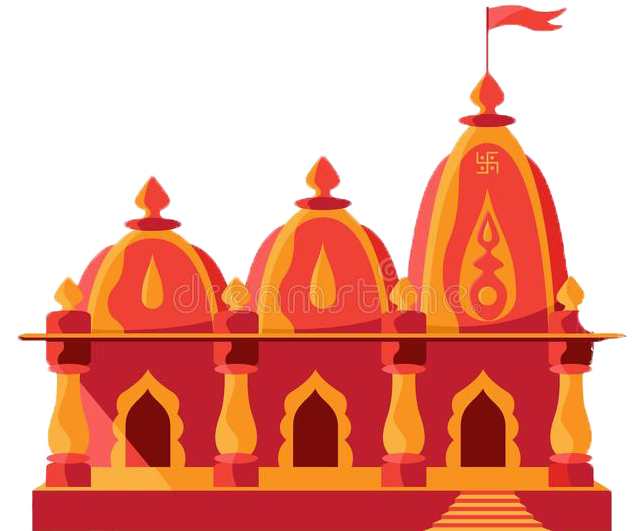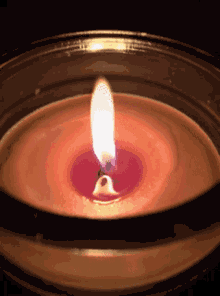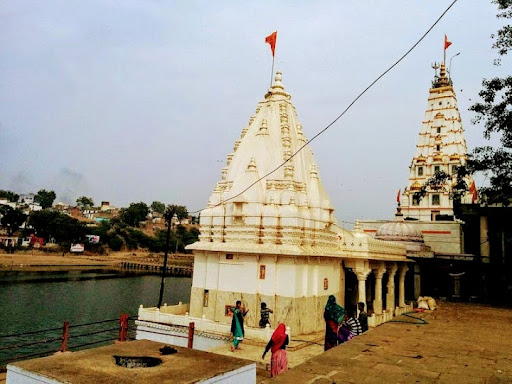Dress Code
Entry Restrictions
Parking Facilities
Security and Surveillance
Introduction and History in Brief
Pashupatinath Temple at Mandsaur, also referred to as the Mandsaur Shiva temple, is a Hindu temple dedicated to Lord Shiva in Mandsaur, Madhya Pradesh, India. It belongs to Pashupatinath tradition which is one of 6 major tradition within Shaivism. It is located on Shivna River, and is known for its eight-faced Shiva Linga. The temple sculpture is dated to the 5th or 6th century based on inscriptions, with some referring to the site as Dashapura. It is near the Rajasthan border in the historic region of Malwa, about 200 kilometres (120 mi) from Indore, about 340 kilometres (210 mi) west of Udaigiri Caves and about 220 kilometres (140 mi) east of Shamalaji ancient sites, both a significant source of Gupta Empire era archaeological discoveries.[1][2] The site has been important to dating and the architectural studies of some distant sites such as the Elephanta Caves.
The site’s history is traceable to the 2nd-century CE when it was already a Hindu pilgrimage site.[3] It is mentioned by the ancient Indian poet Kalidasa, who praises the women of Dashapura as “so practiced in their seductive movements”. Ten inscriptions found in the area suggest the Mandsaur site was an important cultural and religious center in the first half of the 1st millennium CE.[3] Nine of these inscriptions are Sanskrit poems, most dated between 404 and 487 CE, and all include invocations to Hindu gods such as Vasudeva and Shiva in various forms. They mention kings of Gupta Empire era, as well as temples of Dashapura.[3] Together with dozens of temples discovered at a number of sites in western Madhya Pradesh, eastern Rajasthan and northern Gujarat region, the Mandsaur site with the Shiva Stele and the temple reflect what Stella Kramrisch called one of the “Western schools” of ancient and early medieval Indian art.[4] James Harle concurs and includes the nearby Sondni and Kilchipura sites to the Western school along with regions farther west.[5] According to Harle, the sculpture from the temple and other archaeological findings such as the Mandsaur inscriptions – one of which he calls “the longest and certainly the most beautiful of the Gupta inscriptions” – reflect the “flavor of life at its best in Gupta times”.[6]
The inscriptions, state Harle and other scholars, suggest that the sculpture and temples of Mandsaur were built with resources pooled by the common people, such as silk weavers of Dashapura (Mandsaur) who had settled there from Gujarat.[6][7] However, these inscriptions mention a Surya (Sun) temple, a Vishnu temple and others. They do not mention the Pashupatinath temple. Excavations have yielded several brick temples of Shiva which have been dated to the 6th century, suggesting that Shiva was a prominent deity along with others in ancient Mandasor.[7] Additionally, only the foundations of most early temples and monuments are presently identifiable, as the Buddhist, Hindu and Jain temples in Mandsaur were demolished and its stones and relief panels used to build a Muslim fort after the region was conquered in the late medieval era.[7]
The eight face Shiva found in the reconstructed Pashupatinath temple is from the 1st millennium CE and a rare iconography. It is 4.5 metres (15 ft) tall and was discovered in the river bed of the Shivana.[8] It has been reconsecrated into the temple. The upper part of the linga has four heads in a line, while the other four heads are carved below them in the second line. The faces have open eyes, with the third eye on their forehead visible.[9] Each face has elaborate hair probably reflecting the culture of its time for men. Each wears jewelry such as earlobes, necklace and more. The eight faces represent the various aspects of Shiva in regional Shaivism theology: Bhava, Pashupati, Mahadeva, Isana, Rudra, Sharva, Ugra and Asani. It is sometimes referred to as Ashtamukha or Ashtamurti. According to Goyala, this Mandsaur linga is likely from the early 6th century.
Important News Related to Temple
Manyatas
Architecture
The main attraction of Mandsaur is lord Pashpupatinath temple. Pashpupatinath is synonymous name of lord shiva. This artistic effigy is built-up smooth, glowingly dark coppery fiery rock-block. The temple is situated at the bank of Shivna river.
Its weight is 4600 kg. Height 7.25 ft. in curvature and 11.25 ft. in straight. It has 8 heads they are divided in two part. First part in 4 heads on the top and second part in 4 head bottom. Top 4 heads are clear, refined and complete then 4 bottom heads are not refined.
This temple have four doors in the four directions but entrance door is situated in the west. This effigy’s heads which is situated in the west are presenting fearful image of lord shiva. This heads make-up indicate three rasp (relish) which is in bun-shaped hair with poisonous snakes, emerging third eye and opened underlie. In the centre tangled hair are surrounding snakes that is acquainted annihilation omkar (veda mantras symbolizing God almighty).
Temple Photos
Videos from YouTube
Presiding Deity
Bhagwan Shiv🙏
Bhagwan Shiv with weapons
Be A True Devotee
Worship your Isht in your tradition .
But a passive worship is a total waste of your time and energy .
For True Worship ,a devotee MUST master the use of weapons the Deity bears.
The weapons of Bhagwan Shiva are Trishula (Trident), Pashupatastra, Parashu-Axe, Pinaka bow.
Remember, for a Sanatani, Shastra (Weapon) and Shaastra (Holy Book) go together 🙏
Always carry the weapons of respactive deity like Gada,Sword and Trishula.
How to use? Where available? Legal issues?
Email us at <mandirdarshan.org@gmail.com>
Timing
5Am to 8Pm
Aarti Timing
Details awaited solicited.
Basic Facilities
Activities
Festivals
Every year all major festival avam festivals are celebrated in the temple. it goes like this :-
Ganesha Chaturthi
Ram Navami
Sita Jayanti
Hanuman Jayanti
Durga Pooja
Kartik Shukla Panchami
Navratris
Maha Shivaratri
Diwali
Holi
Temple Anniversary etc..
Famous Temples Nearby
KHATU SHYAM JI TEMPLE
Nageshwar temple
siddeshwar mahadev mandir etc..
Near by Shops & Markets
Nearby Dharamshalas
👉Click HERE to look upon Dharamshalas nearby near Temple.
Hotels near Temple
Restaurants near Temple
Nearby Hospitals
Concerned Police Stations
Police Station Kotwali Mandsor MP
337C+465, MP SH 14, Sarafa Bazar, Mandsaur, Madhya Pradesh 458002
Managment Commity
Miscellaneous information
Legal information
Facilities to hold Functions
Library
Akharas
Mehants, Pujaris, Archakas and Sewayats
Gau Sewa, Birds and otheranimals Sewa
Langar Sewa
Gurukul/Vedic Pathshalas
Mitra Mandal Link for Advice/Guidance*
Modes of Travel
By Air
Mandsaur do not have any Airport. The two nearest Airports are Udaipur and Indore. The Udaipur Airport is around 180 k.m in north-west and Indore Airport is around 210 k.m in South from mandsaur.
By Rail
Mandsaur has its Railway station but nearest railway junctions are at Shamgargh and Ratlam where all long distance trains stops.
By Road
Mandsaur is well connected with roads. Nearby Neemuch district is about 50 KM and Ratlam district is 85 KM , connected with Mhow-Neemuch Highway road. It is also connected the Rajasthan State border via Pratapgarh which is about 25KM away.
Alternate Travelling modes
By Air
Nearest Airport Udaypur and Indore.
By Train
Nearest Railway Statation Mandsaur,Shamgargh and ratlam.
By Road
Temple is Distance from Bus Stop almost 3 k.m
Visitors’ views about the Temple
Address for Visiting and Donation Purpose
Shree Pashupatinath Temple, Mandsaur
334F+649, Pashupatinath Mandir Road, Mandsaur, Madhya Pradesh 458001
07422 205 288



